Completed the repair of the copper roof of the Gion Festival Omandokoro Otabisho
Yoshie Doi
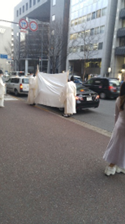 |
 |
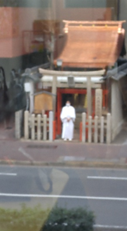 |
 |
| The restoration of the copper roof of the Omandokoro is completed (Karasuma-dori Bukkoji-sagaru) |
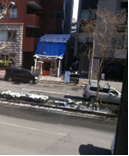
Omandokoro under construction that was covered with a blue sheet |
 Monzen-chaya, drawn in the “Gion Omandokoro Ezu” Muromachi period “Kyoto common people’s life history” CDI ed. |
The current Gion Festival Otabisho is located in Shijo-dori Teramachi, but in the era of Hideyoshi (1591), due to the remodeling of Kyoto, it was moved from the Omandokoro Otabisho located Bukkoji street. During the period from the Shinko Festival to the Kanko Festival, the Otabisho, where the mikoshi (portable shrine) stays, goes around the town of parishioners and returns to Yasaka Shrine.
It is known as an important place where three portable shrines stop on the way back to Yasaka Shrine on July 24th, the Gion Matsuri Festival. Also, on the day of Yoiyama, stalls are lined up and many people visit.
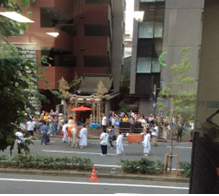 |
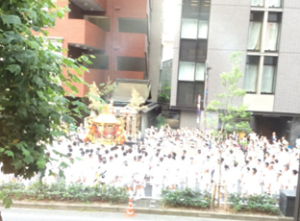 |
| Gion Matsuri Kankosai Omandokoro Otabisho Worship is held every year on July 24th |
During the Kankosai Omandokoro Otabisho worship ritual, the Nakagoza Mikoshi, Higashigoza Mikoshi, and Nishigoza Mikoshi three mikoshi parade on different routes, but they stop at the Omandokoro Otabisho. . The scenery is spectacular. It has a different flavor from Yamaboko Junko.
It is said that the roof of this Omandokoro Otabisho was copper-roofed after the Meiji period. The roof was reroofed for the first time since 1900, and the repair was completed on March 7, 2023, and the gods returned to the Omandokoro. During the repair, the god was moved to Yasaka Shrine, and finally returned and the ritual was held.
From the second floor of the building facing Karasuma-dori, I see the Omandokoro Otabisho every day as I work. I was just in the building on the west side of Omandokoro, so I was worried because it had been covered with a blue plastic sheet for a long time.
In March, I was relieved to see that the people involved in the construction were under construction.
When I heard from the people of Yasaka-jinja Shrine that the roof had been copper-roofed since the Meiji period, I was surprised. I was surprised to learn that copper roofs have been used since the Meiji period.
When the roof was completely reroofed, the deity was covered with a white cloth as it moved from the vehicle to the Omandokoro, and was enshrined so that it would not be exposed to the public. (See photo) Seeing such a scene for the first time made me feel strange and it was a mystical experience.
Right now, I work from the west office of Omandokoro, facing east every day and I have been worshipping the Otabisho, and I am grateful to have been able to see a precious Shinto ritual.
The end of document
